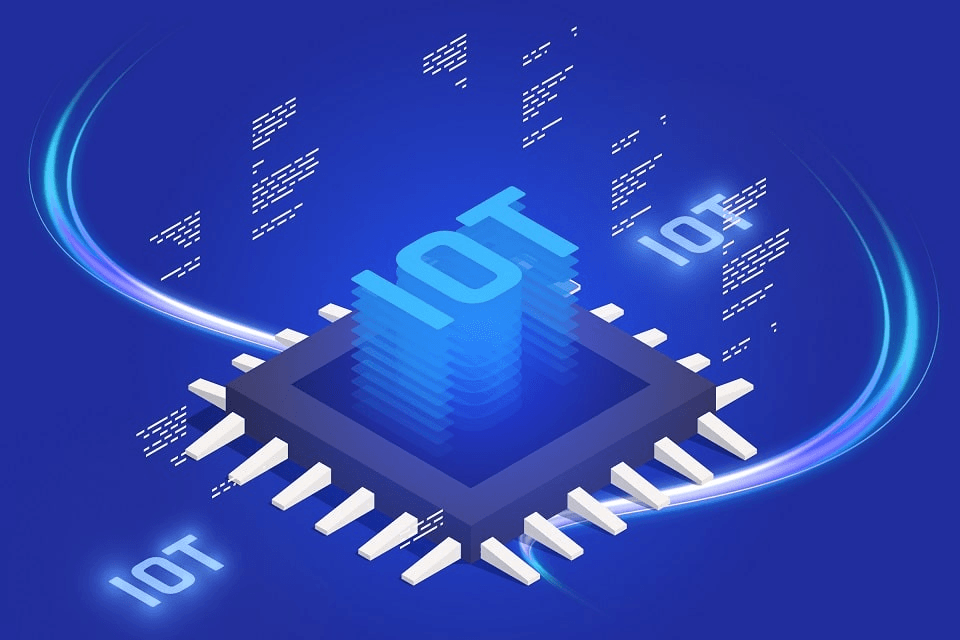In today’s fast-paced industrial world, the adoption of predictive maintenance has revolutionised how businesses manage their assets. Powered by the Internet of Things (IoT), predictive maintenance has proven to be a game-changer in improving operational efficiency and reducing costs.
The global predictive maintenance market will surge from $5.7 billion in 2024 to over $49 billion in 2032 — all thanks to the Internet of Things. This significant growth highlights the increasing reliance on IoT-enabled systems to forecast and prevent equipment failure, ultimately maximising productivity.
Role of IoT in Predictive Maintenance

IoT has wonderfully integrated predictive maintenance. IoT sensors take the actual real-time data from machinery and equipment, then predict potential breakdowns using advanced algorithms and AI before they do occur.
This proactive approach is one of the ways that brings tremendous cost savings and increases asset longevity, making IoT the backbone of modern predictive maintenance.
Key Benefits of IoT in Predictive Maintenance
Let’s explore the key benefits that IoT brings to predictive maintenance, revolutionising the way businesses maintain and manage their assets.
1. Monitoring in Real Time
The IoT sensors help continuously monitor machineries, in turn providing real-time information regarding its performance, temperature, vibration, and other critical parameters. Such continuous data flow notifies the business establishment early to spot anomalies at onset and avoid unforeseen failures.
2. Reduced Downtime
Predictive maintenance by IoT reduces the equipment downtimes. The planning of maintenance activities at ideal times helps businesses avoid costly operational setbacks that may arise from the breakdown of their machinery.
3. Cost Savings
A lower cost of repairs is achieved through predictive maintenance as problems are confronted before they worsen, thereby establishing a significant long-run cost saving through increased asset life.
4. Improved Efficiency
IoT-enabled predictive maintenance allows businesses to maintain equipment in peak condition, ensuring maximum operational efficiency. This, in turn, improves overall productivity and reduces energy consumption.
Latest Predictive Maintenance Trends of 2024

IoT technology continues to advance to introduce new trends in predictive maintenance. The recent trends ensure that industrial activities are more efficient, sustainable, and data-driven.
1. AI and Machine Learning Integration
Predictive maintenance has increasingly been merging artificial intelligence and machine learning. In large data releases by IoT devices, AI and ML algorithms pick up on the patterns that a human may otherwise miss. This provides an even better prediction of when equipment failure is more likely to happen, and the business can take the appropriate steps before such events occur.
The next revolution in 2024 will be regarding IoT-powered predictive maintenance systems, where AI and ML will be fully integrated. Predictive models would be more accurate using AI-based predictive models. The risk of false alarms would be decreased. The efficiency of the maintenance process would be greatly enhanced.
2. Edge Computing for Smarter Decisions
Another trend that is gaining pace in predictive maintenance is edge computing. Edge computing ensures that processing almost happens closer to the source of data originating, on an IoT device itself, rather than relying solely within cloud systems to minimise latency and associated real-time decisions.
This means equipment can be monitored and maintained more efficiently, even in locations or industries where remote site downtime is particularly costly, for example, in manufacturing or oil and gas. Edge computing improves security by reducing the amount of data transferred to the cloud.
3. IoT Enabled Digital Twins
A digital twin is a virtual representative of a physical asset created by the network of IoT sensors, using real-time data. Predictive maintenance digital twins offer a detailed simulation of equipment and machinery, enabling businesses to monitor as well as optimise performance without physical inspections.
The IoT-based digital twins accepted by companies in the aerospace, automotive, and healthcare industries will continue to increase in 2024. By using digital twins, businesses can predict wear and tear, simulate different maintenance scenarios, and make informed decisions about when to service equipment.
4. Predictive Maintenance as a Service (PMaaS)
One of the emerging trends of 2024 is predictive maintenance as a service. In this trend, organisations outsource their predictive maintenance needs to third-party providers who use IoT sensors and data analytics to monitor equipment and predict potential problems for the customer.
PMaaS offers several benefits such as reduced capital expenditure on maintaining the infrastructure, plus the expertise of specialists. It also enables businesses to focus on their core operations while ensuring that their equipment remains in optimal condition.
5. Sustainability and Energy Efficiency
Sustainability is a key consideration for businesses in 2024. The degree to which IoT-based predictive maintenance can affect environmental impact is next to significant. By maintaining equipment in peak condition, predictive maintenance can improve energy efficiency, reduce waste, and lower carbon emissions.
Predictive maintenance supports sustainability within manufacturing, energy, and transport industries due to its ability to ensure that equipment functions at its optimal level while using fewer resources.
8 Key Considerations for Adopting or Updating Predictive Maintenance Solutions
Here are eight important key things to consider when adopting or updating a predictive maintenance system:
1. Solution Fit
Which predictive maintenance approach (such as failure prediction, anomaly detection, or Remaining Useful Life estimation) best suits our maintenance requirements and aligns with our operational goals?
2. System Integration
How easily can the predictive maintenance system integrate with our current maintenance processes and asset management platforms?
3. Vendor Expertise
Should we opt for a vendor who specialises in our industry, specific assets, or use cases? How would choosing a specialist over a general provider benefit us?
4. Data Infrastructure
Do we have the necessary infrastructure to collect and analyse data to ensure our predictive maintenance solution works effectively?
5. Accuracy and Reliability
How can we assess the accuracy of the predictive maintenance solution and build confidence in its insights within our maintenance team?
6. Scalability for Growth
How scalable is the predictive maintenance solution? Can it adapt to our future expansion and evolving needs?
7. Software Capabilities
Does the software offered by vendors include the critical features we require, such as data collection, analytics, and third-party integrations?
8. Staying Ahead with Market Trends
With the continuous evolution of predictive maintenance technologies, how can we stay updated on the latest innovations and ensure that our solution remains cutting-edge?
Maximising ROI with IoT in Predictive Maintenance

As the industry heads into 2024, the latest predictive maintenance trends— AI integration, edge computing, and digital twins are exactly what will be revolutionising the business approach to asset management.
Organisations that invest in IoT-powered predictive maintenance will not only reap the benefits of cost savings and efficiency improvement but also a competitive advantage in their industry.
Ready to transform your maintenance strategy? Find out the ways through which IoT-WorkS can help your business implement IoT-powered predictive maintenance solutions in order to maximise ROI and improve operational efficiency.
FAQ
1. What role does IoT play in predictive maintenance?
IoT enables real-time monitoring of equipment through sensors, collecting data that helps predict potential failures and improve maintenance efficiency.
2. How can IoT-based predictive maintenance reduce costs?
IoT-driven predictive maintenance helps prevent unexpected breakdowns by identifying issues early, reducing downtime and costly emergency repairs.
3. What industries benefit most from IoT-based predictive maintenance?
Industries like manufacturing, logistics, energy, and transportation benefit significantly from IoT-based predictive maintenance due to their reliance on heavy machinery and critical equipment.
